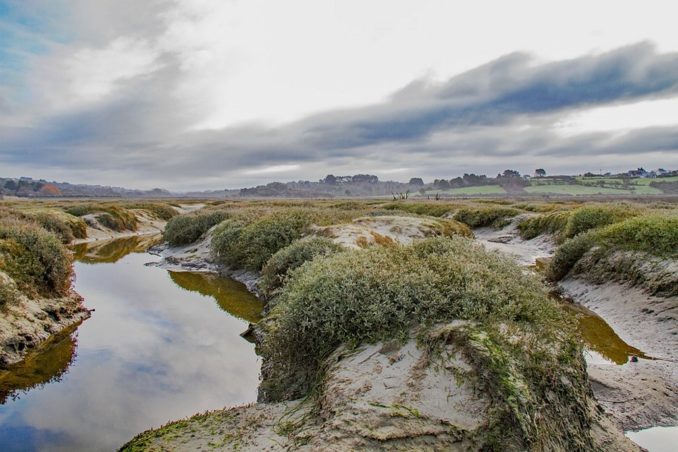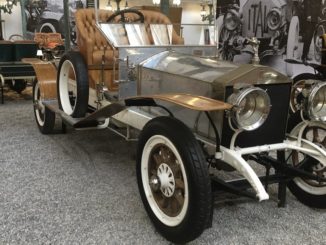Wildfowling is sometimes known as goose fever, for it is about the most addictive of the shooting sports. There is something primal about being out in the tidal marshes on a moonlit night, or a misty pre-dawn twilight, surrounded by the sounds and smells of the no mans land where the sea meets the shore. Nerves tingling, senses straining, as the solitude of the marsh casts a spell, and the anticipation of that first shot threatens to overwhelm you and time seems to stretch out to infinity.

There has always been one constant in my life, and that is fieldsports, but in particular, Wildfowling. It hasn’t really changed much since the late 50s when my father first ventured out with dog and gun on the Ouse marshes and it is from him that I get my love of country sports (but more about him another time). True, the names of the fowl we hunt aren’t always the same, and the guns and equipment have become more advanced, but the fundamentals remain unchanged. I think as he grew older and I grew up, we bonded in a way that needed no words as we stood together in freezing gutters waiting for the honking of the Canada geese or the whoosh of the teal.
My love of the sport is steeped in lore and I read all the books I can find about the exploits of the old ‘fowlers, men like Sir Ralph Payne-Gallwey, Sir Peter Scott, and Stanley Duncan. True conservationists with a deep respect for nature, these are the men I strive to emulate, although legends like these are far beyond this mere mortal. As a child I would wait patiently for my dad to discard his latest copy of ‘Shooting Times’ reading every word from cover to cover. My early teens until perhaps the age of 18 or 19 were dominated by my obsession with shooting, until fundamentally different interests became equally important to me. But that’s another story…
Over the last 20 years or so, I have shot wildfowl all over the country, from the Somerset levels, to the Western Isles of Scotland. When wildfowling, my quarry is usually geese, but I never pass up a shot at Duck, and I have also taken Snipe and Woodcock. As with everything in life, there is a balance, and the true sportsman only takes what he needs. The fortunes of the quarry species wax and wane through the years, and fowl that were once common are now protected so it is important to be mindful of what you take and how often. In the UK it is currently legal to shoot Canada, Greylag and Pinkfoot geese, Gadwall, Goldeneye, Mallard, Pintail, Pochard, Shoveler, Teal, Tufted and Wigeon Duck. They all have an ‘open season’ which in England and Wales on the foreshore is September 1st to February 20th, excepting Christmas day. There are representative groups for shooters, the main one for Wildfowlers being the British Association for Shooting and Conservation, and they offer a range of services to wildfowlers, and coordinate efforts to fight for shooters rights in parliament.
My constant companions in recent times have been my two Labradors, and everything in the sport is harder without them. They are a great comfort to me on a cold December morning, and I would much rather spend my time with them than a fellow human. Other than that, you can have as much or as little kit as you like. I suppose most critical to the task at hand is a gun. I use a cheap Turkish 12 bore semi-automatic shotgun which has a 28” chrome lined barrel and a rubberised coating which is rugged and dependable. For ammo, nothing except non-toxic shot is allowed which means no Lead. Instead I use high performance steel, normally 40 grams of no1 shot for geese and 36 grams of no 2 for duck. Some load their own, but 12 bore shells are relatively cheap so I see no benefit. Alternatives to steel include bismuth and tin (but these are horrendously expensive). Other than that, I have a range of coats to suit the conditions, neoprene chest waders, a game bag and a rucksack, hat, head torch and flask of coffee. A mobile phone is also handy in case you get into trouble. Some shooters like to use decoys, although these are generally for those in pursuit of duck, not the opportunistic fowler like me.

Shooting is not a cheap hobby. On the whole it costs me thousands every year, but Wildfowling on its own is not that expensive. Cartridges cost about 20p a shot (if bought in sufficient quantities), so depending on how well you shoot, it could be very cheap indeed. Maybe £500 on club fees and guest passes, there are few other annual costs after your initial set up has been purchased. Having been in and around shooting for a long time, I know a lot of like-minded people, and shooting becomes cheaper and easier to come by as the years go on. There are wildfowling clubs all around the country, both coastal and inland, and I have been a member of several in my time. I also have permission to shoot stretches of river marsh, but for me, nothing compares to the great estuaries of the Wash and the Humber. Of course, it’s not all outgoings, with a freezer full of the most delicious and healthy meat imaginable, an unbelievable level of fitness from the countless miles of unforgiving terrain covered, and the priceless time alone to think and relax.

The feeling of rain on your face and the bite of frost on your fingertips. The peacefulness of a still moonlit night where you might be the only person in 20 miles. Startling a fox that is stalking the same prey you are seeking. Hearing the myriad calls from sleepy sea birds as they wake from their safe havens on the mud banks. For me, these experiences and countless others are what make the magic of the foreshore real. Even if I never pulled the trigger again, I’d still feel compelled to return. I’m still lucky enough to shoot on the eastern side of the Wash and I relish every chance I get. I wish I could do more, but the pressures of work and home sometimes get in the way, which is something everyone can relate to. If you ever get an opportunity, do not hesitate to grasp it.
© Columba Palumbus 2020



